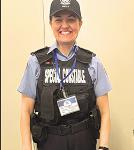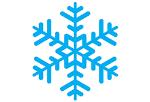Emery’s excluded from the Hall of Fame
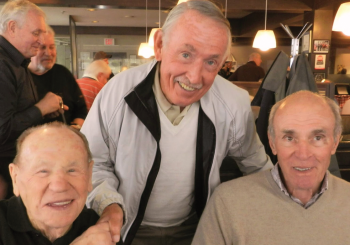
By Tim Lambrinos
A number of great hockey players exist with links to Emery and nearby Habitant Arena - our area always seems to have fine young players emerge. Some of the best play in the MTHL, GTHL, OPJHL, OHA, NHL and internationally.
The Emery community was honoured when Emery’s Geraldine Heaney was inducted into the Hockey Hall of Fame. We will discuss two former professionals who, to date, have been denied entrance into the hall.
Harry Pfluegl grew up on Franson Crescent in the Woodview community just off Weston Road. He attended Gulfstream Public School where two of his favourite teachers were Mr. Sands and Mr. Young. At that time the Toronto Telegram newspaper published the names of the best upcoming hockey prospects in Ontario. While in Grade 6 Pfluegl was on the list. In his youth, Pfluegl played MTHL hockey for Shopsy’s, a farm team for the Toronto Marlies. Nearly every year, Shopsy’s would be favoured to win the legendary Québec peewee hockey tournament.
Pfluegl’s team lost in the final to Dorsett Park, a team with future NHL’ers Wayne Dillon and Charlie Huddy. Shopsy’s would avenge the loss in the MTHL championship game held later that year. 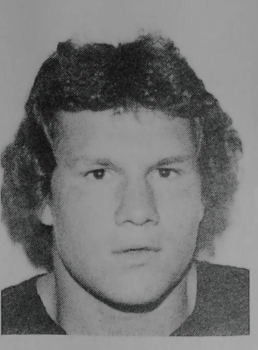
In 1971, Pfluegl enrolled at Emery Junior High School on Weston Road. Phys. Ed. teacher Wayne Weller said he was committed to putting together an Emery Collegiate Institute team that would be unparalleled throughout the city. It was clear to many that such a team could have easily won the North York championship. Some of these boys included Pfluegl, Terry Jackson, Glen Oliver, Hughie Baird, Pat Byrnes, Dave Gaston, Dave Crossey, Tom Pahapill, Rick Sobotka, Doug Caines, Drew McFredries, Brent Gordon and the Higgins’ brothers. Unfortunately, they were not permitted by their parents to be part of this speculative all-star team. Most boys were already playing hockey three times a week and the risk of possible injury didn’t seem tempting enough to participate. Disappointedly, Mr. Weller was never able to assemble the team.
Pfluefl was an exceptional all-round athlete in high school and played linebacker for the Emery Hillmen football team.
He won the school’s athletic Superstars competition each year. His football coach at Emery was history teacher, Mr. Gary Cranmer. Pfluegl played hockey in advanced leagues for the North York Rangers, Toronto Red Wings and the Toronto Marlies. He was drafted into the OHA in 1976 by the London Knights.
In 1977, Pfluegl’s father had his son pursue a professional hockey career in Europe. The plan was an alternative to him attending the Washington Capitals training camp. He was promptly sent off to join the West Germans’ Under 20 hockey team where in 1977 and 1978, he scored four goals in 17 games. He then played professional hockey for Fuessen EV and Cologne EC. Pfluegl became a professional hockey player in Germany during the entire decade, up until 1989. In all, Pfluegl played for six different professional teams. He scored 188 goals and 354 points in 375 games.
Even though Pfluegl has the stats to be considered in the international section of the Hall of Fame, his website link on their website is completely void of statistics. This means that although individually eligible, it seems questionable to contemplate this well-regarded honour since Pfluegl never played in any NHL game. Meanwhile, other players from foreign countries have been inducted into the Hall, who never played in an NHL game.
The second slight revolves around renowned Toronto Maple Leaf great, Bob Nevin. His connection to the Emery community is that his brother, John Nevin, has a daughter Tracey married to Emery Village Voice publisher, Sean Delaney.
Nevin was born in South Porcupine, Ontario in 1938. At the age of four, his family moved to North York so that his father could be available to contribute in WWII. The Nevin family moved to a home along Glen Park Ave near Dufferin St. At the far end of their street, brothers John and Bob noticed a small swamp would ice over during winter. The boys began skating and playing hockey on the pond.
Eventually, the Township of North York decided to open and build an outdoor rink, Glen Long Arena. This is where Bob Nevin started playing organized hockey in a church league representing nearby Tabernacle Church. A scout named Mr. Humphries noticed Bob play in one of his weekly church league games. Shopsy’s was a well-known team in the MTHL and Nevin would soon be a player on the team. One wonderful fringe benefit was that players would receive post-game Shopsy’s hotdogs after every game. Nevin was placed on an NHL protected list of local players at the age of 12. This was done by the Toronto Maple Leafs’ organization when they decided Bob was a future superstar.
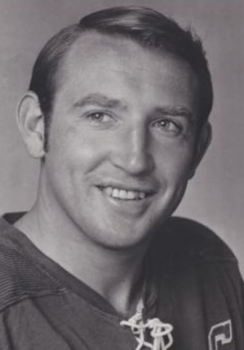
In 1953, Nevin played Junior B hockey with the Weston Dukes. At 16, he began playing for the Toronto Marlboros and was paid $2.50 a game. In the 1955–56 Marlies’ season, Nevin scored 34 goals and had 65 points in only 48 games. Nevin’s outstanding scoring touch with the Marlies continued the next few seasons and with the Rochester Americans of the AHL. In 1960, Nevin scored 21 goals and had 58 points for the Toronto Maple Leafs in his first full season in the NHL. That year, he finished second in balloting for Rookie of the Year, losing to teammate Dave Keon. Over the next two seasons, Nevin was known for his solid two-way play helping the Leafs win two Stanley Cups (‘62 - ’63).
In Feb. 1964, Nevin was part of a trade package (with Dick Duff) when the Leafs acquired Andy Bathgate from New York. Years later, teammate Dave Keon applauded Bob and remarked, “I believe the trade of Bob Nevin and Dick Duff for Andy Bathgate was the start of the slide. If they had stayed, it would not have taken us 14 games to win the Cup. It was hard for Bathgate to play within our system.”
A respected leader on and off the ice, Nevin began his six-year run as Rangers’ Captain in 1965-66. He played just over seven years for the Rangers and topped the 20-goal mark on five different occasions. His best goal-scoring season with the Rangers was in 1968-69 when he scored 31 goals on a line with Dave Balon and Walter Tkaczuk. In the 1970-71 season, he led the team to 107 points and the Rangers developed into one of the elite teams in the NHL.
In May 1971, Nevin was traded to the Minnesota North Stars for Bobby Rousseau and once again provided solid team leadership with his distinctive two-way play. On June 13, 1973, he was claimed by the Los Angeles Kings in a reverse draft and hit the 20-goal mark for the first time in three years. The next year, he registered a personal best 72 points and tied his season’s goal scoring record with 31. That year the Kings set a franchise record with 105 points. The following season would be Nevin’s last in the NHL. He scored 55 points before jumping to the WHA. In 1976, after playing in only thirteen games for the Edmonton Oilers, the classy veteran retired after breaking his collarbone. 
In all, Nevin played in 1,128 NHL games and scored 307 goals. He played in a total of 84 post-season games and had 34 career playoff points. His 726 regular season points places him shoulders above a many NHL players who have been inducted into the hall. Nevin will turn 80 this March. To date, this obvious slight by the illustrious Hall remains a mystery. Nevin’s fine character, skill, toughness, leadership and poise were qualities that he displayed to his fans throughout his entire playing career. And to think this remarkable legend of hockey all began on a frozen North York swamp with a young boy discovering hockey with his brother. Yes to Bob Nevin in the Hockey Hall of Fame.

